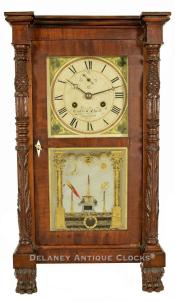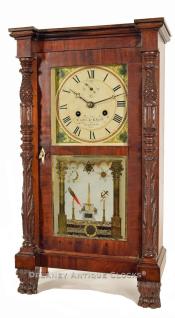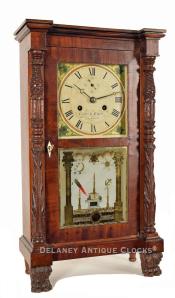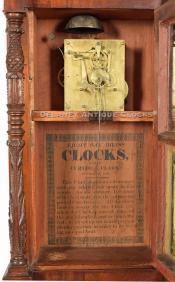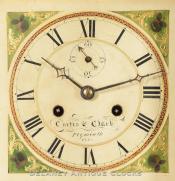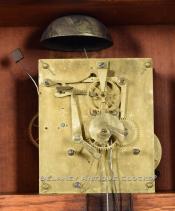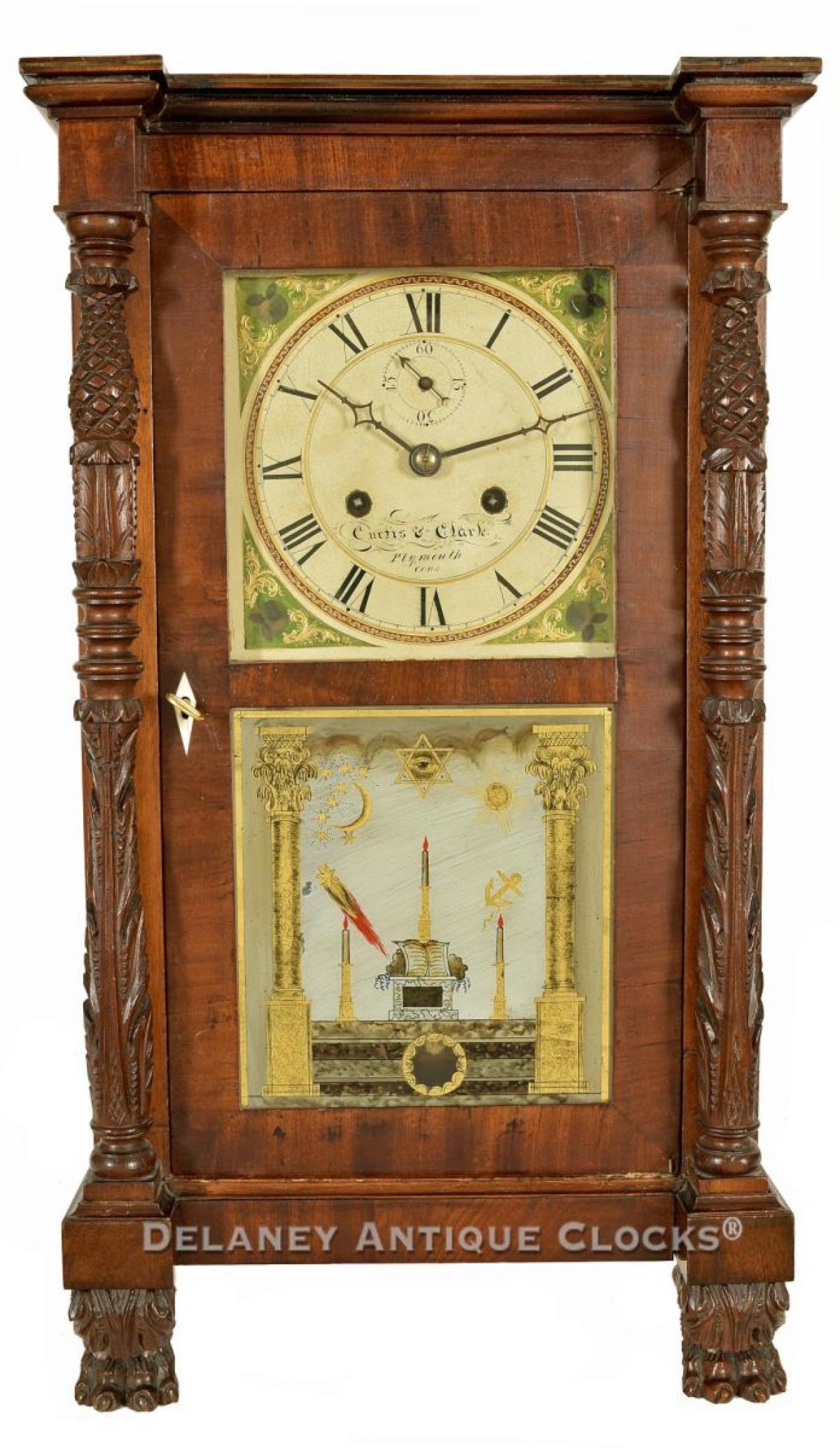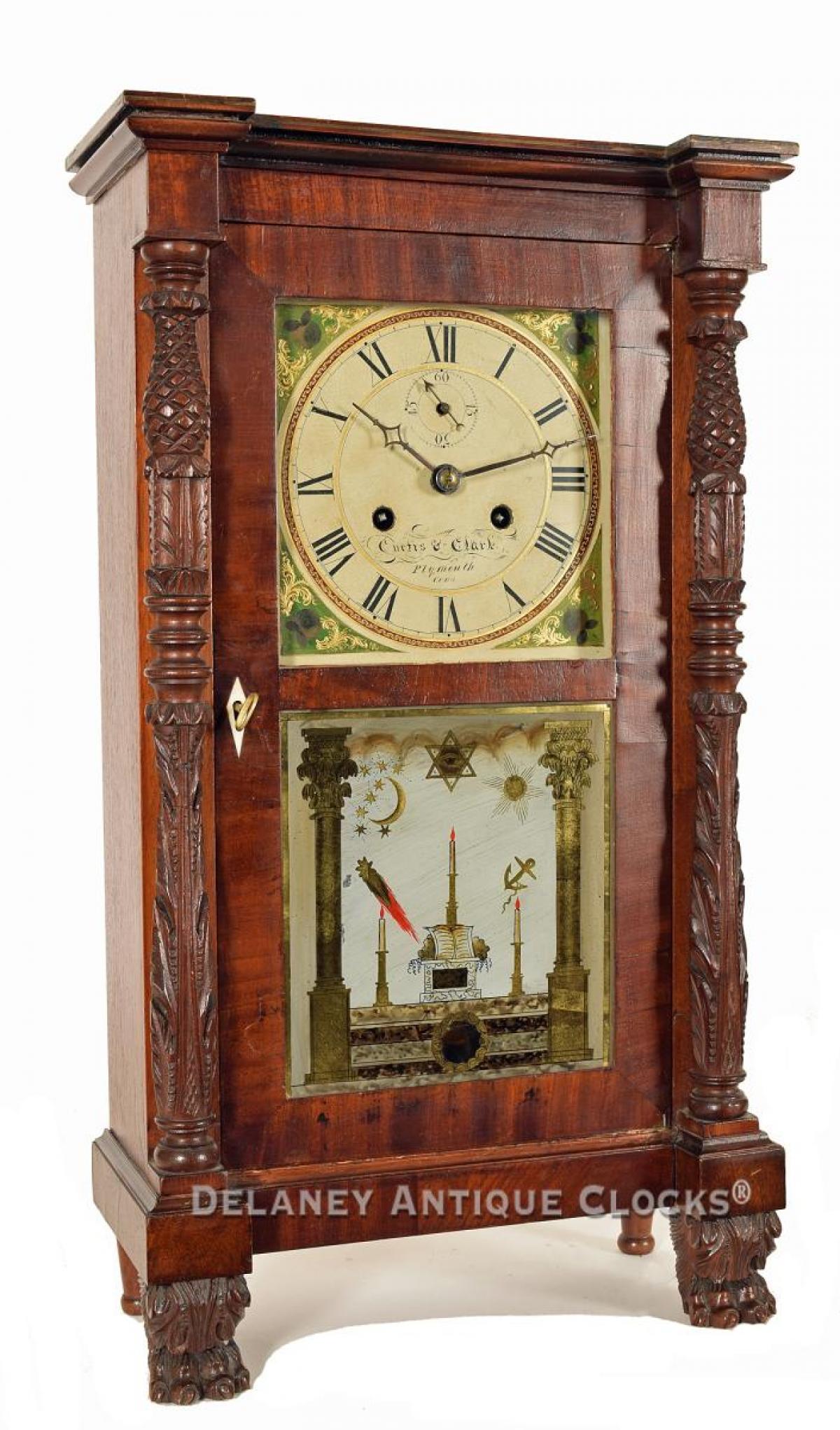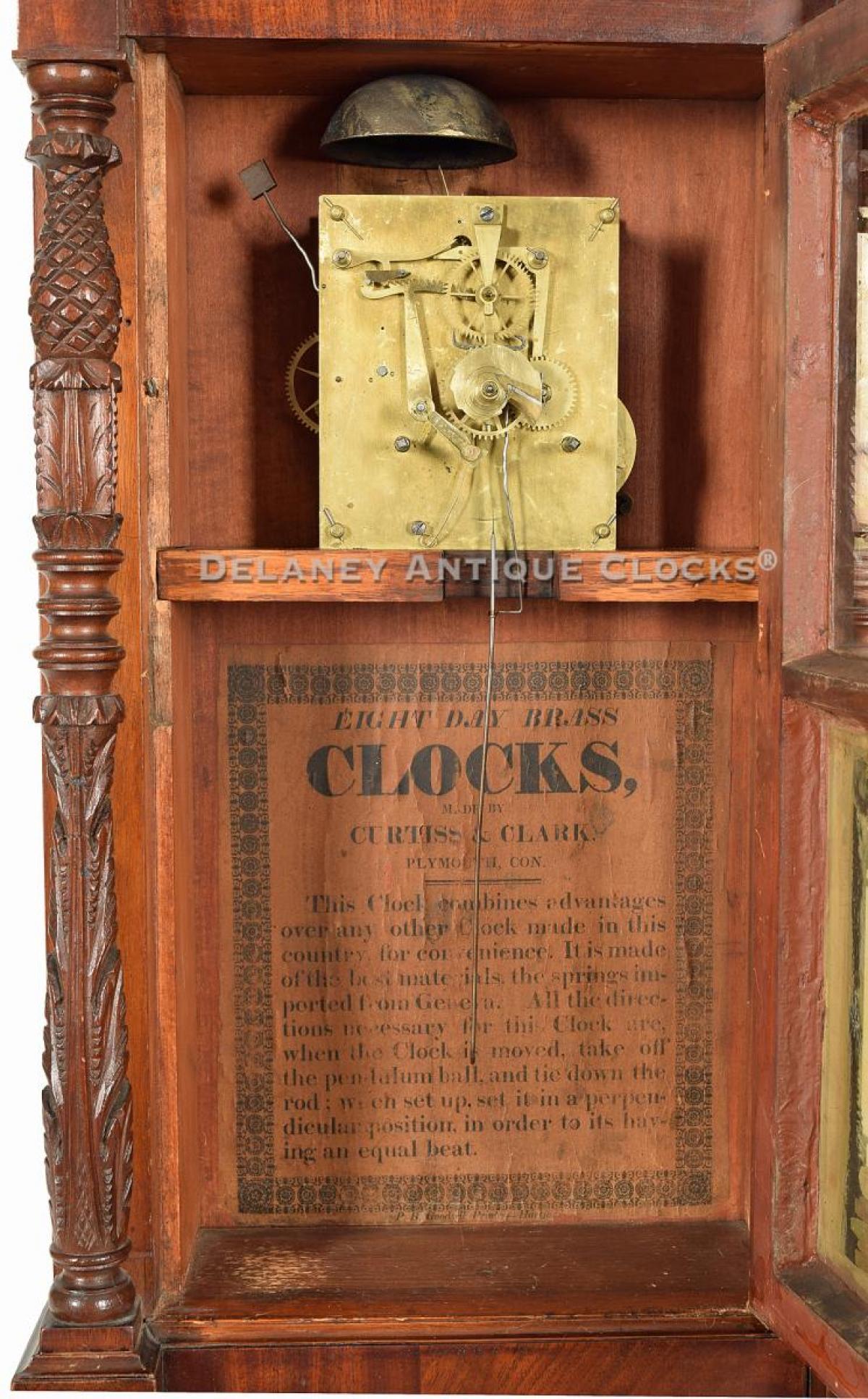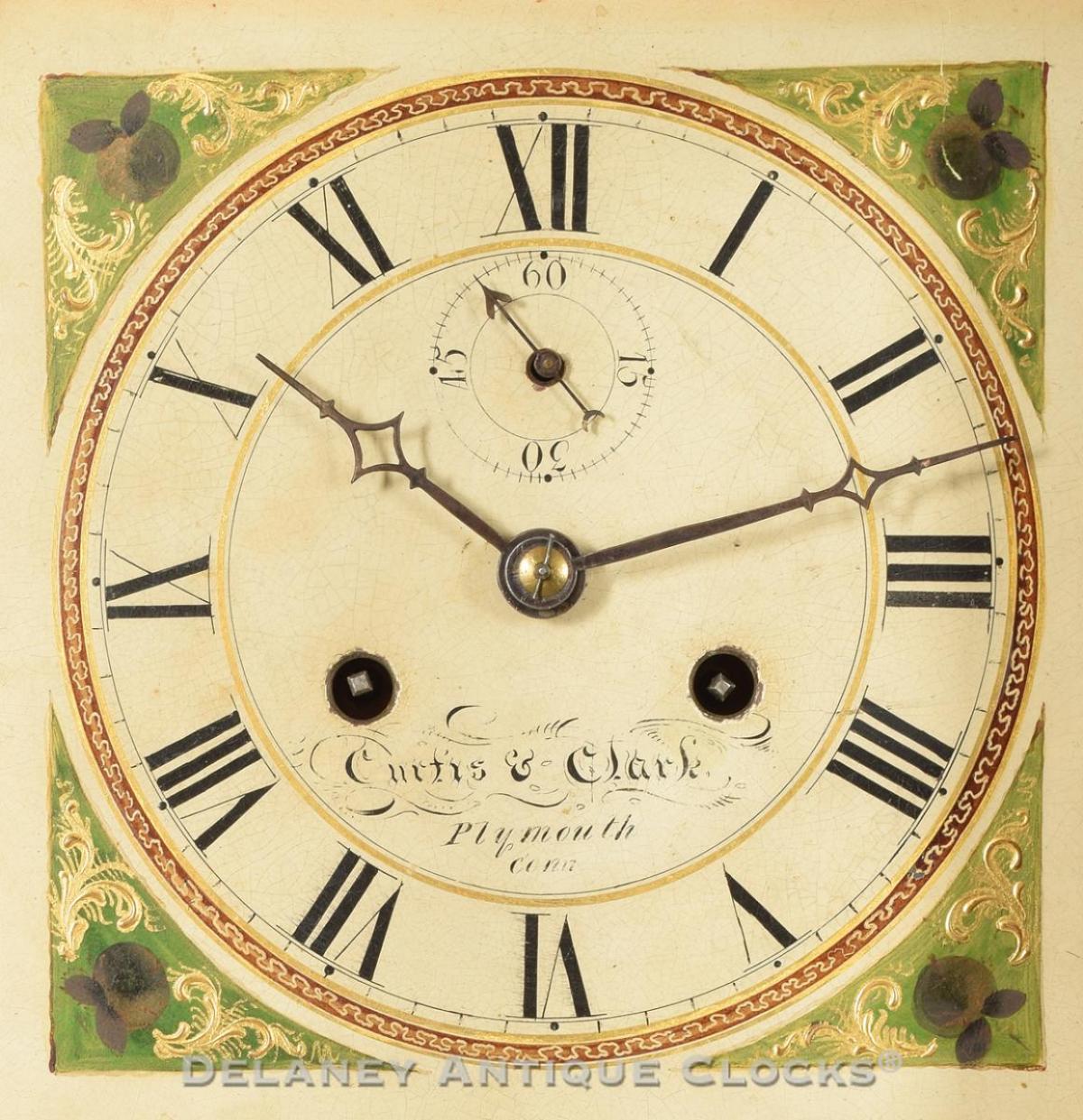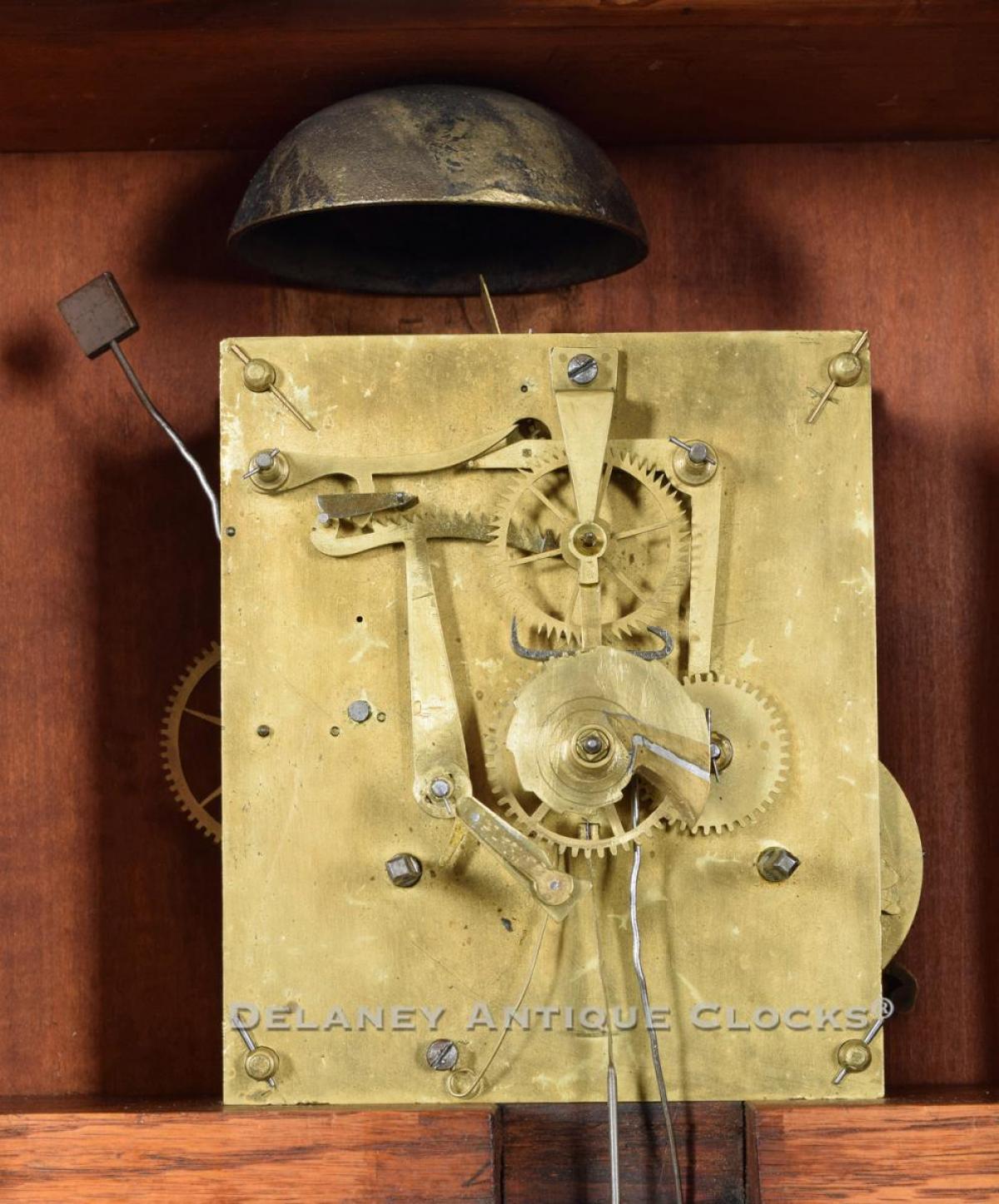Curtiss & Clark Plymouth, Connecticut. Rare miniature shelf clock circa 1824. 222033.
The Plymouth, Connecticut firm of Curtiss (Curtis) & Clark was comprised of Garner Curtis and Virtue Clark. This firm is credited with making a rare miniature shelf clock incorporating the first use of coil springs in America. It was advertised that the springs used in this clock were imported from Geneva since the Americans had yet to develop the technology to produce them. E. C. Brewster did not develop this technology until about 1838. Interestingly, the springs found in these clocks were actually from France and are signed "J. H. Marchand." An 1824 contract outlines the production of 200 of these clocks. It is now thought that only 100 of them were originally produced, and far fewer have survived. These miniatures are found numbered. The numbers can be found in several locations, including the top of the seat board, the edge of the seat board, and the top edge of the door. To date, no numbers above 100 have been recorded.
Charles Platt was contracted to manufacture these highly sophisticated empire-style mahogany cases. The cases measure 23 inches tall, 14 inches wide, and 4 inches deep. They are elevated on feet. The front feet are intricately carved in the form of animal paws. The rear two feet are turned. The columns that flank the door are fully formed and decorated with carvings. The access door is divided into two sections. The lower section is fitted with a paint-decorated tablet. This tablet is decorated from the back and features numerous Masonic themes. This glass is outstanding. The upper section of the door is fitted with clear glass that protects the dial.
The heavy sheet iron dial is also colorfully paint-decorated. It is a Boston product, most likely painted by Samuel Curtis Jr. The four spandrel areas are fully decorated with painted designs. Peaches are the central theme and are positioned on a field of green color. Gilt patterns frame the spandrels. Roman-style numerals mark the hours. A subsidiary seconds dial is located below the hour XII. This dial is wonderfully signed. The signature reads "Curtis & Clark / Plymouth / Conn." Steels formed hands display the time.
Vitrue's brother, Sylvester, was contracted to do the ironwork.
The movement is reminiscent of a Salem Bridge design, except that it is spring-powered. The two-train movement is brass, has an eight-day duration, and is good quality. Turned pillars or posts support the two large brass rectangular-shaped solid plates. These are beautifully finished. They support the hardened steel shafts, the polished steel pinions, and the brass gearing. The springs are enclosed in brass barrels. Heavy ratchets and dogs are located on the rear of the backplate. A star wheel is used in the stop-work design. The escapement is a recoil. The strike train features a rack-and-snail, and as a result, it will strike each hour on the hour on a cast iron bell mounted above the movement.
This case also retains the Clockmaker's label printed by P.B. Goodsell in Hartford. This printed label reads: "EIGHT DAY BRASS / CLOCKS, / MADE BY / CURTISS & CLARK / PLYMOUTH, CON. / This Clock combines advantages over any other Clock made in this country for convenience. It is made of the best materials, the springs imported from Geneva. All the directions necessary for this clock are, when the clock is moved, take off the pendulum ball, and tie down the rod; when set up, set it in a perpendicular position, in order to its having an equal beat."
Inventory number 222033.

